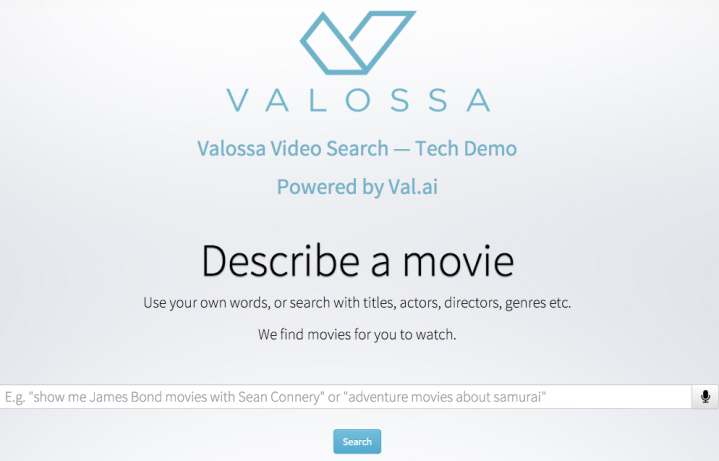
Valossa is an AI tech firm based in Finland, and Val.ai is their first release. The technology is still being refined in its beta testing phase, but plenty of search results will already get you directly to the titles you need. Searching for “Tom Cruise kills aliens” will return Edge of Tomorrow as the first result, and Valossa suggests search ideas from “movies with Sean Connery in red pants” to “all movies that are comedies in Hawaii”.
The AI technology behind Val.ai is based on years of research conducted at the University of Oulu in Finland, according to the Valossa team. The Val.ai system analyzes movies and videos to identify individual concepts, like places, themes, specific actors, and more. In the hands of content and service providers, Val.ai should be able to make any database of video content fully searchable in real-time.
Val.ai can interpret chained voice commands, like an initial search for “epic history movies” which can then be further refined by a command like “only show me the ones with large battle scenes.” In future versions, Valossa hopes that Val.ai will become fully compatible with voice command systems like Alexa. As of now, Alexa integrations are also still in the beta testing phase. The basic Val.ai technology for real-time video content analysis has already been tested with Finnish TV broadcasts, and Valossa hopes international providers, producers, and advertisers might pick up the technology soon. For now, you can start using their deep search feature online to help you find the name of that one movie you can’t quite remember.


